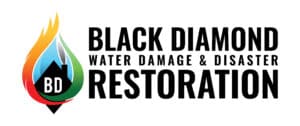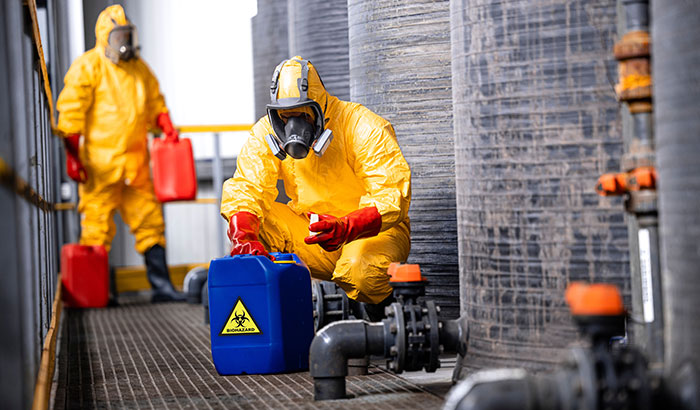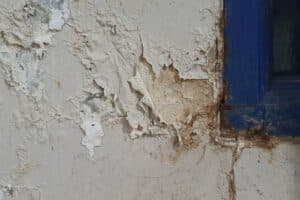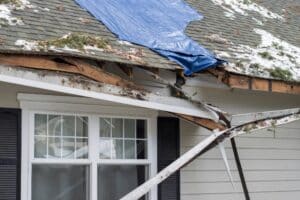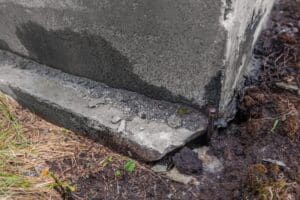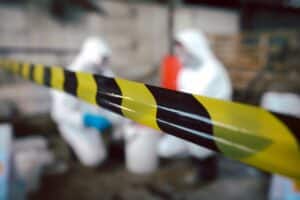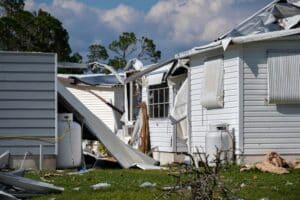What is a biohazard? Where can biohazardous materials be found? And what dangers can biohazards potentially pose to your health? The answer to these questions can help you avoid situations that may put your health at risk. In this article, we’ll give you all the details you need to stay safe in a cleanup situation that contains biohazardous materials.
First – What Is a Biohazard, and How Can It Affect My Health?
A biohazard refers to any biological substance that can threaten human health or the environment. Biohazard material can include microorganisms, viruses, toxins, and other biological agents that can cause harm to living organisms. These hazards can be found in various settings, including healthcare facilities, laboratories, and natural environments.
Here are Ten Examples of Biohazards:
- Ebola virus: The Ebola virus is a highly infectious and deadly virus that causes Ebola hemorrhagic fever. It is transmitted through direct contact with bodily fluids, such as blood, saliva, and vomit. Symptoms include fever, headache, muscle pain, and bleeding.
- Anthrax: Anthrax is a bacterial infection caused by the spore-forming bacterium Bacillus anthracis. It can be contracted by inhaling or ingesting the spores or through contact with infected animals. Symptoms include fever, chills, chest pain, and difficulty breathing.
- HIV: HIV is a virus that attacks the immune system, leading to the development of AIDS. It is transmitted through sexual contact, sharing needles, or from mother to child during childbirth or breastfeeding. Symptoms include fever, fatigue, and swollen lymph nodes.
- Malaria: Malaria is a parasitic infection transmitted through infected mosquito bites. Symptoms include fever, chills, headache, and muscle pain.
- Tuberculosis: Tuberculosis (TB) is a bacterial infection that primarily affects the lungs. It is spread through the air when an infected person coughs or sneezes. Symptoms include coughing, chest pain, and fatigue.
- Hantavirus: Hantavirus is a virus that is transmitted through contact with the droppings or urine of infected rodents. It can cause a severe respiratory illness called Hantavirus pulmonary syndrome. Symptoms include fever, muscle aches, and shortness of breath.
- Botulism: Botulism is a rare but serious bacterial infection caused by the Clostridium botulinum bacterium. It is typically contracted through contaminated food or improperly canned foods. Symptoms include blurred vision, difficulty swallowing, and muscle weakness.
- Salmonella: Salmonella is a bacterial infection commonly contracted through contaminated food, such as undercooked chicken or eggs. Symptoms include fever, diarrhea, and abdominal cramps.
- Cholera: Cholera is a bacterial infection spread through contaminated water or food. Symptoms include severe diarrhea, vomiting, and dehydration.
- Yellow fever: Yellow fever is a viral infection transmitted through mosquito bites (darn those pesky mosquitoes). Symptoms include fever, chills, headache, and muscle aches.
These are just a few examples of the various biohazards that can threaten human health. Therefore, handling and disposing of these substances properly is important to prevent the spread of disease and protect public health.

Next, Materials That Only a Professional Should Cleanup
These biohazard materials include the following:
- Blood spills: Blood spills can occur in various settings, including healthcare facilities, public areas, and homes. Blood can carry pathogens, such as hepatitis B and C, HIV, and MRSA, that can survive on surfaces for an extended period. Blood spills need to be cleaned up properly to prevent the spread of infectious diseases. A professional cleanup crew will wear personal protective equipment (PPE) and use specialized cleaning agents and equipment to clean and sanitize the affected area.
- Pathogens: Pathogens are microorganisms that can cause diseases in humans. These can include bacteria, viruses, fungi, and parasites. Pathogens can be present in various environments, including healthcare facilities, schools, and public places.
Exposure to pathogens can lead to infections, which can be mild or severe, depending on the type of pathogen and the person’s immune system. Professional cleaning crews use specialized equipment and cleaning agents to eliminate pathogens and sanitize the area thoroughly.
- Mold: Mold is a fungus that grows in damp and humid environments, such as bathrooms, basements, and attics. Mold exposure can cause respiratory problems, allergic reactions, and other health issues. Mold cleanup requires specialized equipment, such as HEPA filters, to prevent the spread of mold spores. Professionals will also use mold-specific cleaning agents and take measures to prevent mold from reoccurring.
- Animal waste: Animal waste can carry harmful bacteria and viruses, such as E. coli, salmonella, and leptospirosis, that can cause human illness. Animal waste cleanup requires the use of PPE, specialized cleaning agents, and equipment to ensure that all biohazardous materials are removed and properly disposed of.
- Hoarding and filth: Hoarding and filth cleanup involve the removal and disposal of large amounts of biohazardous waste, such as moldy food, animal waste, and human waste. These situations can be hazardous to human health, attracting pests, such as rodents and insects, and exposing individuals to pathogens. Professionals will use specialized equipment and cleaning agents to sanitize the area.
- Chemical spills: Chemical spills can occur in industrial settings, laboratories, and homes. Exposure to chemicals can cause respiratory problems, skin irritation, and other health issues. Chemical spills require specialized cleanup procedures, as different types of chemicals require different cleaning agents and methods. Professional crews will wear appropriate PPE and use specialized equipment to dispose of all hazardous materials.
- Crime and trauma scenes: Crime scenes or trauma scenes, such as those involving homicides or suicides, require professional biohazard cleanup to prevent the spread of disease and remove any biohazardous materials.
These scenes can contain blood, bodily fluids, and other biohazardous materials that require specialized cleaning agents and equipment. Professional crews will use specialized cleaning agents and equipment to sanitize the area and properly dispose of all biohazardous materials. Additionally, they will ensure that all federal and state regulations are followed regarding the proper disposal of biohazardous materials.
In general, any situation that involves potential exposure to biological material or other hazardous substances should be handled by a trained and certified professional to ensure the proper cleanup and disposal of the hazardous material.
Need help cleaning up biohazard materials? Black Diamond Water Damage & Disaster Restoration can help!
Black Diamond Water Damage & Disaster Restoration has trained professionals that are no strangers to biohazard cleanup. We will make sure that the area is cleaned effectively and safely. If you require biohazard cleanup, contact us on our site or call us at (801) 316-8997, and we’ll have your place back to its pre-damaged condition in no time.
toto slot